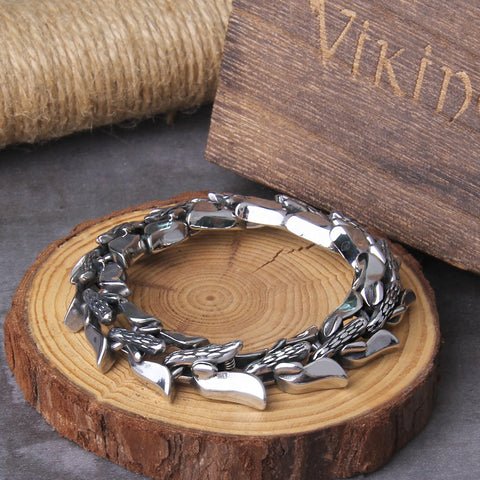Viking Longships and Seafaring

Viking Longships and Seafaring
The Vikings were a seafaring people who dominated the seas of Northern Europe for centuries. Their boats were some of the most advanced in the world at the time and allowed them to explore new lands, trade and establish settlements all over Europe and as far away as Asia, and present-day Canada, Greenland, and the United States.
The first Viking boats or longships were constructed out of wood, with a keel and ribs made from oak. The planks of the boat were held together with iron nails, which helped to make the vessel stronger and more durable. Viking longships were clinker built, meaning that they were constructed by overlapping planks rather than attaching them edge-to-edge. This method allowed for greater flexibility in construction but also gave rise to a greater risk of leaks. To prevent this from happening, many longships featured a layer of tar along their seams which helped keep the water out. All longships had a single mast with a square sail and used oars to propel the ship when needed.

A typical clinker built Viking longship construction
The Vikings employed two primary types of longships: warships and merchant or transport ships.
Warships
Warships, also known as drakkar or dragon ships were built for speed and mobility in battle and typically had larger and higher sails for more speed, a narrower hull, and more oars than merchant or transport ships. Drakkars had a deep draft and shallow hull which made them suitable for both sailing and rowing and allowed them to navigate rivers and creeks as well as the open sea. Warships were also double banked, which enabled more oarsmen to be deployed on either side of the ship allowing for faster rowing (although this would have been dependent on how many oars each man operated).
These ships were built to be very sturdy and could take on a great deal of damage without sinking. Simple construction techniques meant that the Vikings were able to build their ships quickly and cheaply, which was a crucial advantage in battle when they needed to repair damage or replace ships. It has been estimated that a new ship could be built from scratch in only one month.
A typical longship could carry up to 30 men with all of their supplies needed for a long voyage across the ocean so space was at a premium. As a result barrel lids doubled up as tables for gaming and eating. The lids had holes carved into them to allow dice to be rolled and the tables could be stowed away at night.
As the name suggests, dragon ships featured a dragon head on their prow which was believed to have been used as a psychological weapon against enemies that would see them as terrifying and evil (and not just another ship). The head could also have been used to ram into an enemy ship’s bow, causing the enemy crew to be crushed by the impact and fall into the sea. The dragon head was also a symbol of power and strength during Viking Age Scandinavia.
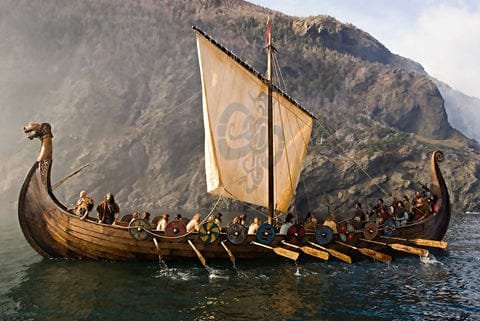
A Viking Drakkar longship
Merchant Ships
Viking merchants used ships called knarrs, which were designed to carry cargo and passengers. The keel of these ships was very deep and had a large draft with a shallow hull which made them faster than other ships at the time and also allowed them to navigate difficult waters and beach on shore to load and unload cargo. The knarr’s hull had a much larger cargo space than other ships for storing goods such as food, livestock and weapons. They were not as sturdy as dragon ships but this made them much more suitable for sailing on open seas in search of new trade routes or lands to conquer.

The Viking Knarr merchant and transport ship
Navigation
Viking sailors were skilled navigators and often sailed by night to avoid being spotted from shore. They made many advancements in navigation techniques but perhaps the most important was the use of the sunstone. This stone allowed them to find their place in the sky at night, which helped them navigate during cloudy conditions or in darkness. The sunstone is thought to have been made of Icelandic spar, which is a variety of calcite (calcium carbonate). It is found in lodes near volcanic areas and is found in many parts of Iceland and Norway (the Vikings believed that these crystals were found only within regions governed by Odin).
The sunstone is thought to aid navigation by polarizing the light that it reflects and allowing that polarized light to shine through cloud cover, which would otherwise prevent celestial navigation using stars alone.
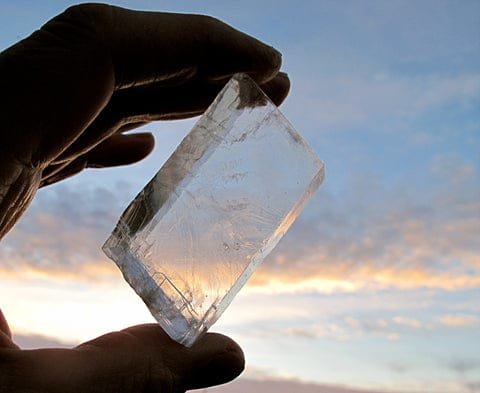
A modern Viking sunstone
The Vikings also used “moonstones” as navigational tools. Moonstones were dark stones that appeared bright when placed in front of a light source such as moonlight or sunlight. They may have been hematite (iron oxide), magnetite (iron oxide), or even amber. The moonstones may have been used in conjunction with a “sunstone”, but the moonstone was also often used alone.
The Vikings also utilized the sun to determine their direction of travel. They did this by observing the shadows that objects cast. They would then turn towards the object whose shadow pointed in the direction they wished to travel. This method is known as “shadow stick” navigation and it could be used on cloudy days or at night if you had a clear view of the horizon.
Natural landmarks such as coastlines or mountains that could be seen from far away were often used to aid navigation. This technique is called “running on the sight” or “on sight navigation”. Another method used was “dead reckoning” where they would estimate how far their ship had travelled based on how fast it was moving and how much time had passed since its last course correction (a type of sundial called an “hourglass” was used to tell time when they were at sea. This was a piece of wood with a hole in the middle and two pieces of wood that had hour markers on them that would fit into the hole. A person could tell what time it was by looking at where the sticks were pointing). By plotting this course on a map, they could then figure out where they were going even if their ship was not close enough for them to see land or landmarks.
Other navigational tools that Vikings employed later in the period included compasses and sextants. A compass was made from a lodestone (a naturally magnetized piece of iron pyrite) suspended inside of a wooden bowl or box with a hole in one side that allowed it to be oriented towards magnetic north.
Viking History: Viking War
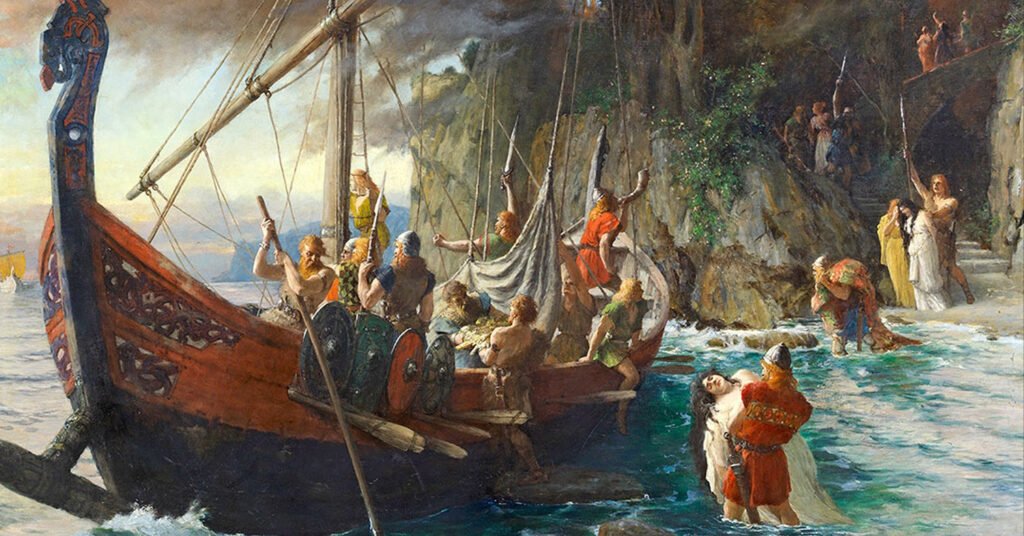
The Viking developed numerous strategies and techniques to deal with much better equipped enemies and bigger number in the opponent formations. A few of there ideas had actually taken their toll on their opponents and kept them in fear. Viking shallow draught ships were a key element of Viking warfare, not in a sea-battle sort of sense, but since they were light and exceptionally quick, not only assisting in quick coastal strikes but also allowing them to direct rivers and permeate inland. This can be found in usage as, by the 830s CE, a basic increase in both the size and the frequency of Viking raids is individually reported for Britain, Ireland, along with western Europe (in particular in Frankish territories). Increase the variety of ships in their fleets from the earlier handfuls to hundreds, the Vikings now began assaulting targets further inland, such as their hits in 834-836 CE on the significant trading centre of Dorestad some 80 km from the open sea in what is now the Netherlands. Named kings or earls from the upper levels of Scandinavian society– showing individual status in your home, but not necessarily rulership of big territories – now appear as leaders, too, besides the lower chieftains who would likewise have actually stayed in the spotlight. Ravens were utilized as method to hunt as they were already understood in this method, if just vikings were able to color cordinate there clothing with what we have here at the ship like the brand-new Ravens Flight bomber coat.
Like the
rest of
early middle ages warfare in western Europe, Viking warfare could not simply overlook the overloading impacts of winter season on marketing and logistics. As such, it was typically a seasonal affair, with an integrated winter season vacation at first back house in Scandinavia but increasingly in overwintering bases and settlements once they popped up in Viking-held areas abroad. From such settlements the Vikings could take part in local politics, tactfully choosing sides, reaching arrangements with their enemies, protecting the payment of tribute, and introducing new campaigns. Even when it comes to inland fights, the Vikings’cherished ships remained
crucial wherever they might be used. The ships had a shallow adequate draught to paddle up the larger rivers, bring anything from men to products and loot, implying that whenever the Vikings campaigned near areas their ships might reach they had no requirement for aggravatingly sluggish overland luggage trains. They probably wish they could have some contemporary quality of life changes like our Shop Pillows and even our stainless-steel water bottle.< img src ="https://everythingviking.com/wp-content/uploads/2022/12/viking-history-viking-war-1.jpg"alt="everyday-life-for-vikings-u2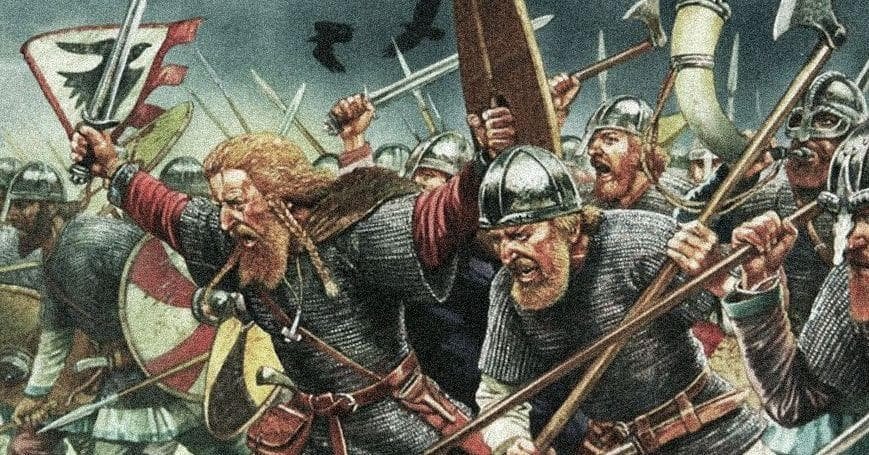
”
> Lots of theories have been proposed in an effort to discuss this significant outpouring of military vitality from Scandinavia throughout the Viking Age.
Some have actually hypothesized that the Vikings had lacked crucial resources in their homelands, and needed to broaden abroad in order to obtain such necessities for survival as food and arable land. No such population pressures existed in Scandinavia in the Viking Age, so this theory holds little weight.
Works Pointed out 1. Groeneveld
, E. (2022, March 6). Viking warfare. World History Encyclopedia. Retrieved March 7, 2022, from https://www.worldhistory.org/Viking_Warfare/#:~:text=Characteristic%20is%20the%20Vikings’%20hit,could%20be%20mounted%20against%20them.
2. Curry, A. (2021, May 3). How to combat like a viking. History. Recovered March 7, 2022, from https://www.nationalgeographic.com/history/article/vikings-fight-warfare-battle-weapons
Viking shallow draught ships were an essential component of Viking warfare, not in a sea-battle sort of sense, however because they were light and very quick, not only helping with quick seaside strikes but likewise allowing them to head up rivers and permeate inland. Like the rest of early medieval warfare in western Europe, Viking warfare might not merely overlook the encumbering effects of winter season on campaigning and logistics. Lots of theories have actually been proposed in an effort to discuss this remarkable outpouring of military spirit from Scandinavia during the Viking Age. Viking warfare. Viking shallow draught ships were an essential aspect of Viking warfare, not in a sea-battle sort of sense, but due to the fact that they were incredibly quick and light, not just assisting in quick coastal strikes but also permitting them to head up rivers and permeate inland.
Viking History: VIKINGS & TURKISH MUSLIMS

There was a period of time when it was though the Vikings and other Norsemen had a geographical disadvantage to finding new lands to dominate and go to. Recent research studies have actually altered when suddenly rings from Muslim

countries turned up
in a Scandinavian tomb.”The discovery of a silver ring with an Arabic inscription in a Viking tomb has included credence to the ancient accounts of Arab tourists in their encounters with the Norsemen, and points to a remarkable trade and cultural exchange.” I have never ever seen bodies as almost ideal as
theirs. As tall as palm trees, reddish and reasonable, they use neither tunics nor kaftans. Every man wears a cape with which he covers half of his body, so that one arm is uncovered. They bring axes, swords, daggers and constantly have them to hand. They use Frankish swords with broad, ridged blades.
“So the Arab tourist Ahmad Ibn Fadlan tape-recorded his meeting more than 1,000 years ago with an odd race he called the” Rusiyyah”, now commonly referred to as Vikings. Ibn Fadlan initially fulfilled the Norse warriors as they travelled across the Russian steppes, cruising their longships down the Volga river and seeking to trade with the Arab world.”The ring may therefore constitute material evidence for direct interactions in between Viking Age Scandinavia and the Islamic world,”says Prof Warmlander.”This discovery
links Islam and Vikings making it possible for them to get Turkish rings and spoils like this. What’s more intriguing is that
Viking funeral clothes had”ALLAH”written across them.”Researchers in Sweden have actually discovered Arabic characters woven into burial outfits from Viking boat graves. The discovery raises brand-new questions about the influence of Islam in Scandinavia, composes journalist Tharik Hussain. They were kept in storage for more than 100 years, dismissed as typical examples of Viking Age funeral clothing. A new investigation into the garments-found in 10th and 9th Century graves -has actually tossed up groundbreaking insights into contact in between the Viking and Muslim worlds.
Patterns woven with silk and silver thread have been found to spell the words “Allah”and “Ali”. The breakthrough was made by fabric archaeologist Annika Larsson of Uppsala University while re-examining the residues of burial costumes from female and male boat and chamber graves originally excavated in Birka and
Gamla Uppsala in Sweden in the late 19th and mid-20th centuries. She ended up being thinking about the forgotten pieces after understanding the product had come from central Asia, Persia and China.”What’s more fascinating is that under devices implied to see better she saw the engraving mirrored clear as day.

” To open the puzzle, she enlarged the letters and examined them from all angles, including from behind.
“I all of a sudden saw that the word ‘Allah’ [God] had actually been written in mirrored lettering,” she states.
Larsson has so far discovered the names on a minimum of 10 of the nearly 100 pieces she is overcoming, and they always appear together.
The new find now raises remarkable questions about the grave’s residents.
“The possibility that a few of those in the graves were Muslim can not be completely eliminated,” she says.
“We know from other Viking tomb excavations that DNA analysis has actually revealed a few of individuals buried in them stemmed from locations like Persia, where Islam was very dominant.
“However, it is most likely these findings reveal that Viking age burial customizeds were influenced by Islamic ideas such as immortality in paradise after death.””
It appears that the Vikings became affected in more than just the shiny spoils the Islamic traders had along with how well they fought against them at the Caspian sea even when shown pendants like these.
WORKS CITED
1.”When the Arabs Met the Vikings: New
Discovery Suggests Ancient Hyperlinks. “The National, Rym Ghazal, https://www.thenationalnews.com/world/when-the-arabs-met-the-vikings-new-discovery-suggests-ancient-links-1.125718. 2.”Why Did Vikings Have’Allah’Embroidered into Funeral Clothing?
” BBC News, BBC, 12 Oct. 2017, https://www.bbc.com/news/world-europe-41567391.–– Associated Hyperlinks -HANDCRAFTED TURKISH RINGS
U.S.A. SHIPPING ON SALE
They were kept in storage for more than 100 years, dismissed as typical examples of Viking Age funeral clothes.
The new brand-new now raises fascinating interesting concerns the graveTomb occupants.”The possibility that some of those in the graves were Muslim can not be completely ruled out,”she states.
Viking History: VIKING EXPEDITIONS & RAIDS
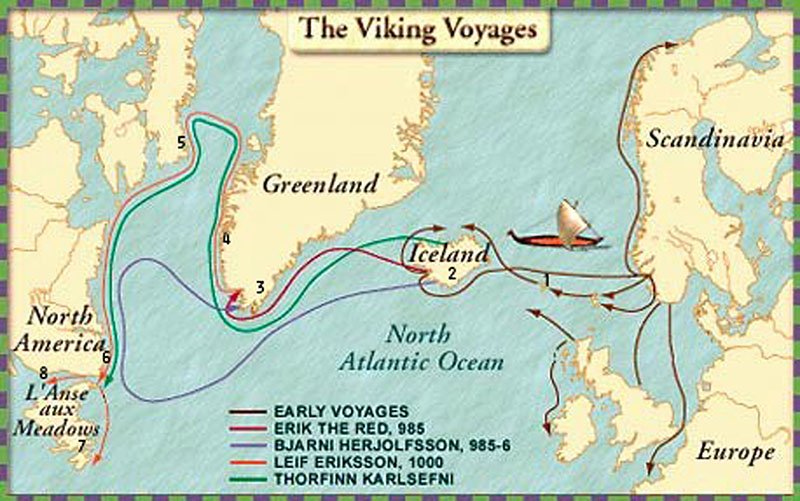
The Vikings had expeditions going to various corners of the earth and a few of these voyages wound up in folklore and song and others as a words of caution for when their monstrous force comes your way to claim gold. Numerous popular laid their claim for the stake of gold and the majority of them began long back.
Hayden Chakra wrote that, “During the Viking Age (9th– 11th centuries), Scandinavian Vikings traveled from Ireland to Russia, engaging in robbery, trade, and hunting. Around 860, the Vikings found an island, calling it” Iceland” (“Ice Country”), and founded a number of nests there. While making frequent voyages to the West, the Vikings are now thought about to be the very first Europeans to go to America, in addition, during the Viking Age, the first genetic contact in between Europeans and North Americans also occurred.
Around 900, a ship under the command of Gunnbjörn departed from Norway. He lost his course, and the Vikings saw an island (Greenland). The discovery of Gunnbjörn influenced other Normans on new expeditions. The creator of the Greenland colonies, Eric Red, was expelled from Norway around 985. After a hard trip, he handled to discover the land discovered by Gunnbjörn. Its environment was really extreme, but Eric called it Greenland (“Green Country”). In 986, Eric gathered a group of Vikings, prepared to decide on the island. When the team showed up, it was summertime, and they handled to establish trade with Scandinavia. Soon, one of the inhabitants, Bjorny Horlfson, came across an unidentified land, the hills of which were covered with forests (perhaps the northeast coast of America) because of the storm. Horlfson was impatient to come to Greenland to inform others about his discovery.
The kid of Eric, Leif Ericson, was the first Viking to go into the coast of America. Around 1000, he checked out the areas he called Helluland (“country of boulders”, now Baffin Land ), Markland (“forest nation”, Labrador peninsula), and Vinland (“white wine nation”, perhaps New England or Newfoundland ). Erikson’s expedition overwintered in Vinland and returned to Greenland.

Aside from those types we had actually the ones called Norsemen that attacked coastal villages and made pillaging well-known. From pillagins to leaving their homeland due to an uncertain overpopulation History.com has the explanations.
History states that, “From around A.D. 800 to the 11th century, a huge variety of Scandinavians left their homelands to seek their fortunes in other places. These seafaring warriors– recognized jointly as Vikings or Norsemen (“Northmen”)– began by raiding coastal sites, specifically undefended monasteries, in the British Isles. Over the next 3 centuries, they would leave their mark as pirates, raiders, traders and settlers on much of Britain and the European continent, in addition to parts of modern-day Russia, Iceland, Greenland and Newfoundland.
The specific factors for Vikings venturing out from their homeland are uncertain; some have actually suggested it was due to overpopulation of their homeland, however the earliest Vikings were trying to find riches, not land. In the eighth century A.D., Europe was growing richer, sustaining the growth of trading centers such as Dorestad and Quentovic on the Continent and Hamwic (now Southampton), London, Ipswich and York in England. Scandinavian furs were extremely prized in the new trading markets; from their trade with the Europeans, Scandinavians learnt more about brand-new cruising innovation along with about the growing wealth and accompanying inner disputes in between European kingdoms. The Viking predecessors– pirates who preyed on merchant ships in the Baltic Sea– would utilize this understanding to expand their fortune-seeking activities into the North Sea and beyond.
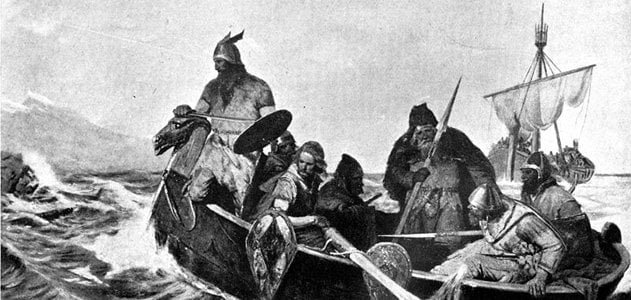
In A.D. 793, an attack on the Lindisfarne monastery off the coast of Northumberland in northeastern England marked the start of the Viking Age. The perpetrators– most likely Norwegians who sailed directly throughout the North Sea– did not ruin the monastery totally, but the attack shook the European religious world to its core. Unlike other groups, these strange new intruders had no regard for spiritual institutions such as the monasteries, which were frequently left unguarded and susceptible near the shore. 2 years later on, Viking raids struck the undefended island monasteries of Skye and Iona (in the Hebrides) in addition to Rathlin (off the northeast coast of Ireland). The very first taped raid in continental Europe came in 799, at the island abbey of St Philibert’s on Noirmoutier, near the estuary of the Loire River.”
The Vikings have left numerous footnotes in history and larger imprints still as their cultural and historic discovers still add to the higher precision of earths mapping and ended up being excellent additions to those circumnavigating the world striving for accuracy and heritage.
WORKS POINTED OUT
1. History.com Editors. “Vikings.” History.com, A&E Television Networks, 4 Nov. 2009, https://www.history.com/topics/exploration/vikings-history.
2. “Viking Exploration to America.” About History, 28 Sept. 2021, https://about-history.com/viking-expedition-to-america/.
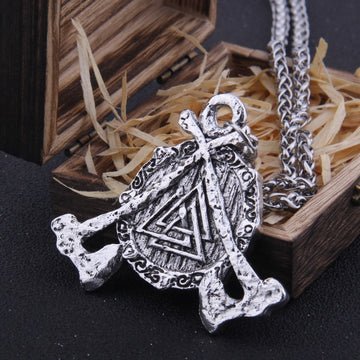
He lost his course, and the Vikings saw an island (Greenland). The precise reasons for Vikings venturing out from their homeland are unpredictable; some have actually suggested it was due to overpopulation of their homeland, however the earliest Vikings were looking for riches, not land. He lost his course, and the Vikings saw an island (Greenland). These seafaring warriors– recognized jointly as Vikings or Norsemen (“Northmen”)– began by raiding seaside sites, especially undefended abbeys, in the British Isles. The precise factors for Vikings venturing out from their homeland are uncertain; some have recommended it was due to overpopulation of their homeland, but the earliest Vikings were looking for riches, not land.
Viking History: WERE VIKINGS AMONG HISTORIES STRONGEST MEN?
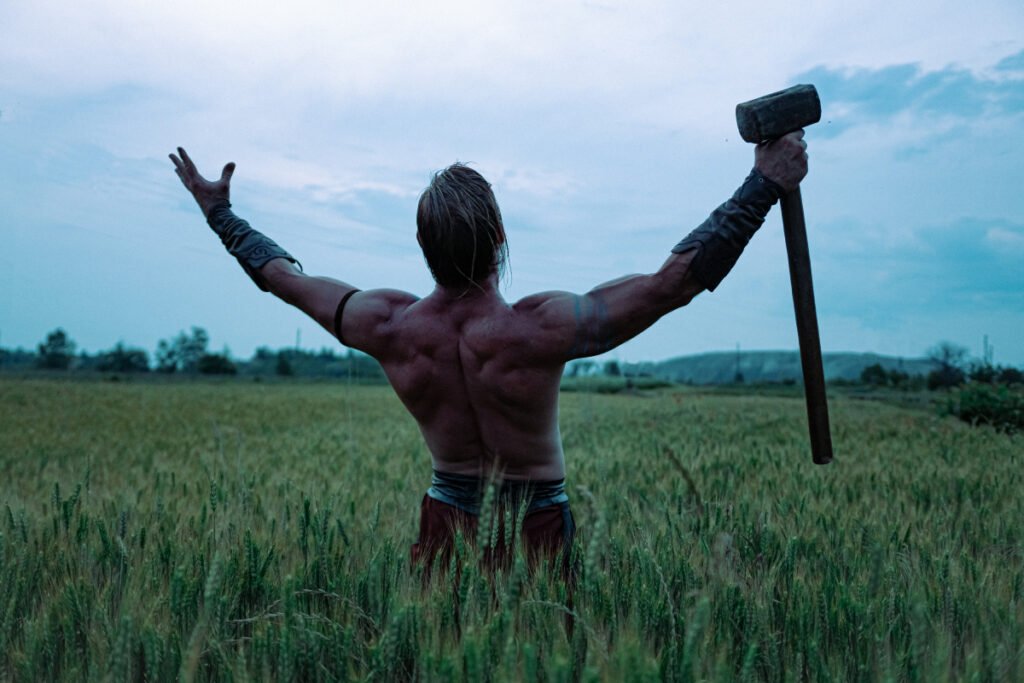
Vikings were seen as the strong men of their time of history. this was during a time of gods an beasts as well as other fables and the savagery and strength of a Viking might have just clocked them in at the top. Besides what the texts said about their intellect and their pillaging methods understanding how they exude their type of prowess comes first as surmised by Donna Kemp.
” Vikings were known as one of the bravest warriors in history. But is this really true? Or do we just think this way due to modern TV shows and video games? Holding their own religion and beliefs played a huge role in their autonomy and strength. For the most part, the Vikings lived as farmers and did not migrate from their homeland. Until the time of the “Viking Age” struck did the Vikings start to raid lands further out. They raided for several reasons. Mostly it was for the loot or land ownership while others were more adventurous and were seeking fame and glory. The Vikings extended their reach and started attacking nearby kingdoms, such as the kingdoms West from their homeland and occasionally the East also. Their first target was the English Anglo-Saxon kingdoms, which weren’t united under one rule and were in constant conflict with each other. They were weak and unorganized. The Norsemen were not very well known. They traveled by sea which gave them the element of surprise. There was no one to warn the English about the upcoming attacks. English monasteries, villages, and even small cities were attacked.“
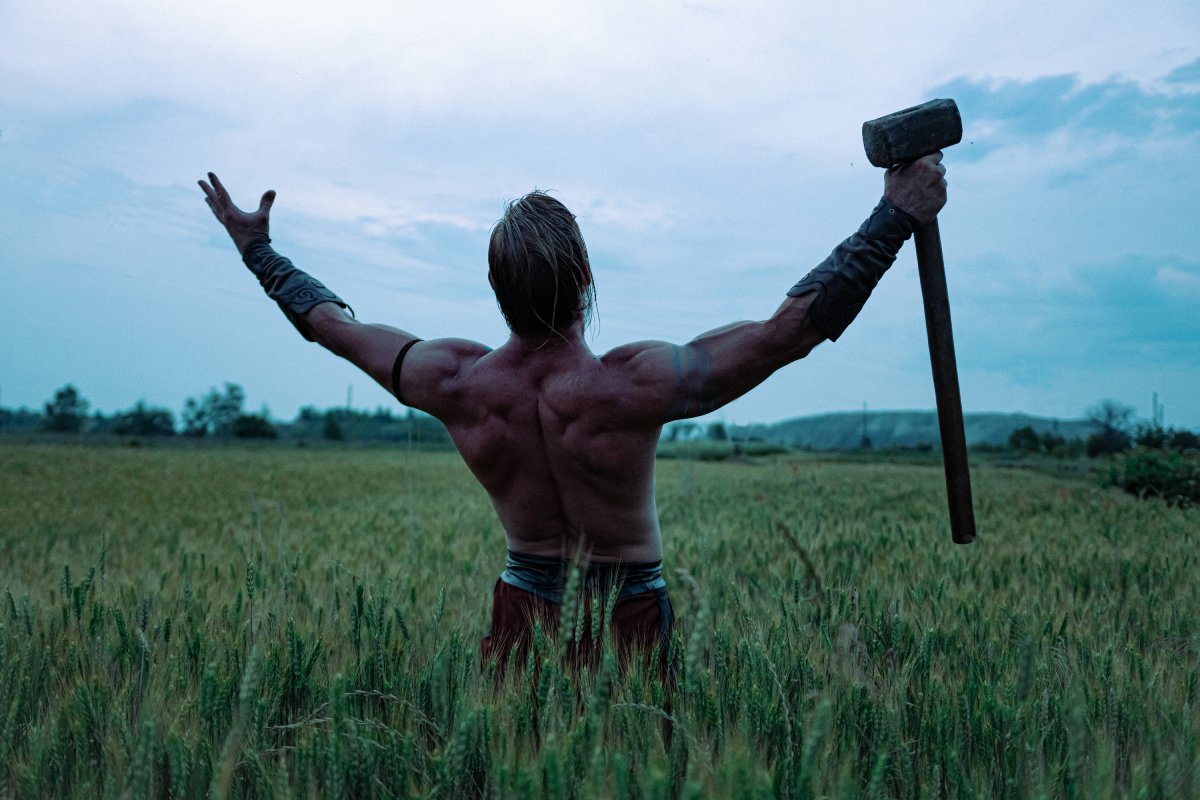
What gave the Vikings their edge was their rich culture and religion? The Viking mentality was strongly perpetuated by their religion. They believed when they die, they enter through the gates of “Valhalla” as true warriors. The Vikings strongly lived by their religion. Such beliefs encouraged the Vikings to fight until the end and die with honor. The idea of an afterlife left the Vikings fearless. Whilst their opponents’ priority would be survival and returning home. The Vikings also had a slight physical superiority as well. They were physically stronger and slightly taller than their opponents. As for Viking equipment, it was not advanced at all. They used round shields, axes, swords, and spears. The famous knife they had was called the Seax. Their armor was not advanced as well. It consisted of chainmail, helmet, Lamellar, and cloth with leather. This gave them decent protection. However, a volley of arrows could do some serious damage despite their shields. While they may be considered advanced for their time, there are many variables one must consider which gave the Vikings an advantageous edge over their opponent.
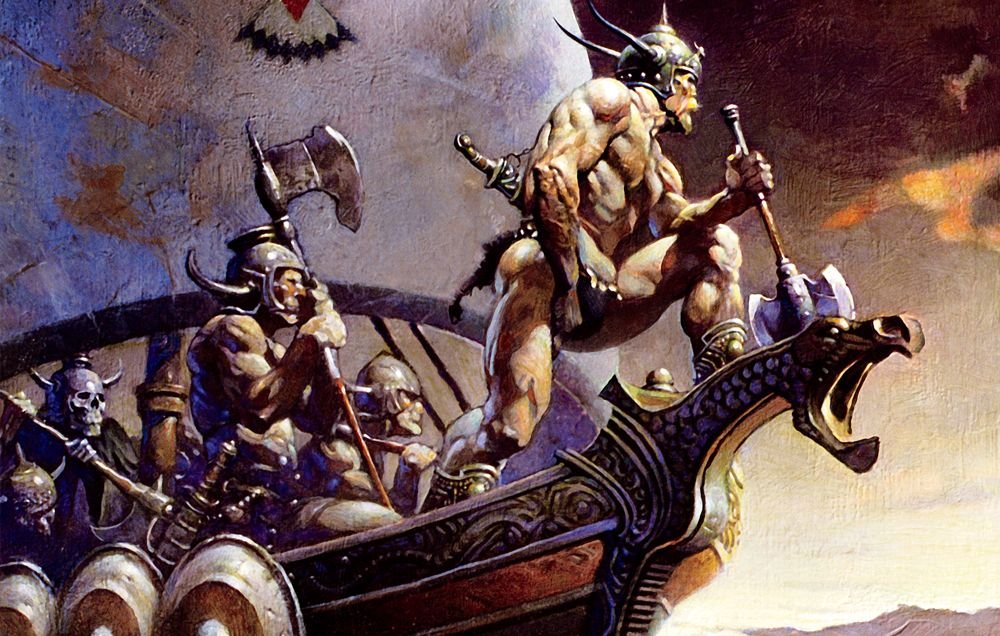
So because of this, does that mean they were also unmatched in warfare as well? Most of their mythos comes from surprise attacks, could they win a fight had it been army to army, man to man with no decisive advantage of surprise?
Now it’s time to look at the military hardware.
Archaeological findings show that the Vikings had everything required of a terrible foe. Their axes, swords, spears, bows and arrows, shields, and armour were equal to the weapons and armours of continental Europe and Britain – and often of the highest quality available at the time.,“In fact, many of the swords used by Vikings came from Frankish swordsmiths, who produced exceptionally good swords. But as the Frankish rulers began to realise that their own weapons were being used against them, they prohibited the selling of them to the Vikings,” says Roesdahl.

The Norsemen also knew how to use siege engines such as catapults and battering rams. All of these were employed by the Vikings during the Siege of Paris in 885-886 CE. The image of Vikings jumping off boats and charging straight into the nearest town with axes and swords swinging is more of a popular fantasy, says Roesdahl. Attacks were most likely carefully planned and executed – both in the case of smaller raiding parties or large Viking armies. When the Danish kings Sweyn Forkbeard and Cnut the Great attacked England in the early 11th century, their armies contained thousands of men and hundreds of ships. Such armies must have required a strong command hierarchy where the king held supreme command. Furthermore, most Vikings were skilled warriors. They lived in violent times and idealised warrior culture. It was a requirement that all male Vikings had completed weapons training so they could defend their villages during attacks. So when they went raiding, it wasn’t just a band of bearded farmers who roamed around; it was well-educated soldiers who knew how to handle themselves. And they were not afraid of dying.”
WORKS CITED
1. “Kimbap, Donna, and Hayden Chakra – June 11. “Were the Vikings Really as Strong as They Are Portrayed?” About History, 26 Oct. 2020, https://about-history.com/were-the-vikings-really-that-strong-and-tough-warriors/. “
2.“”Sjøgren, Kristian. “What Made the Vikings so Superior in Warfare?” ScienceNordic, 20 Dec. 2017, https://sciencenordic.com/denmark-history-society–culture/what-made-the-vikings-so-superior-in-warfare/1452248.”
Viking History: VIKINGS DISCOVERED AMERICA?
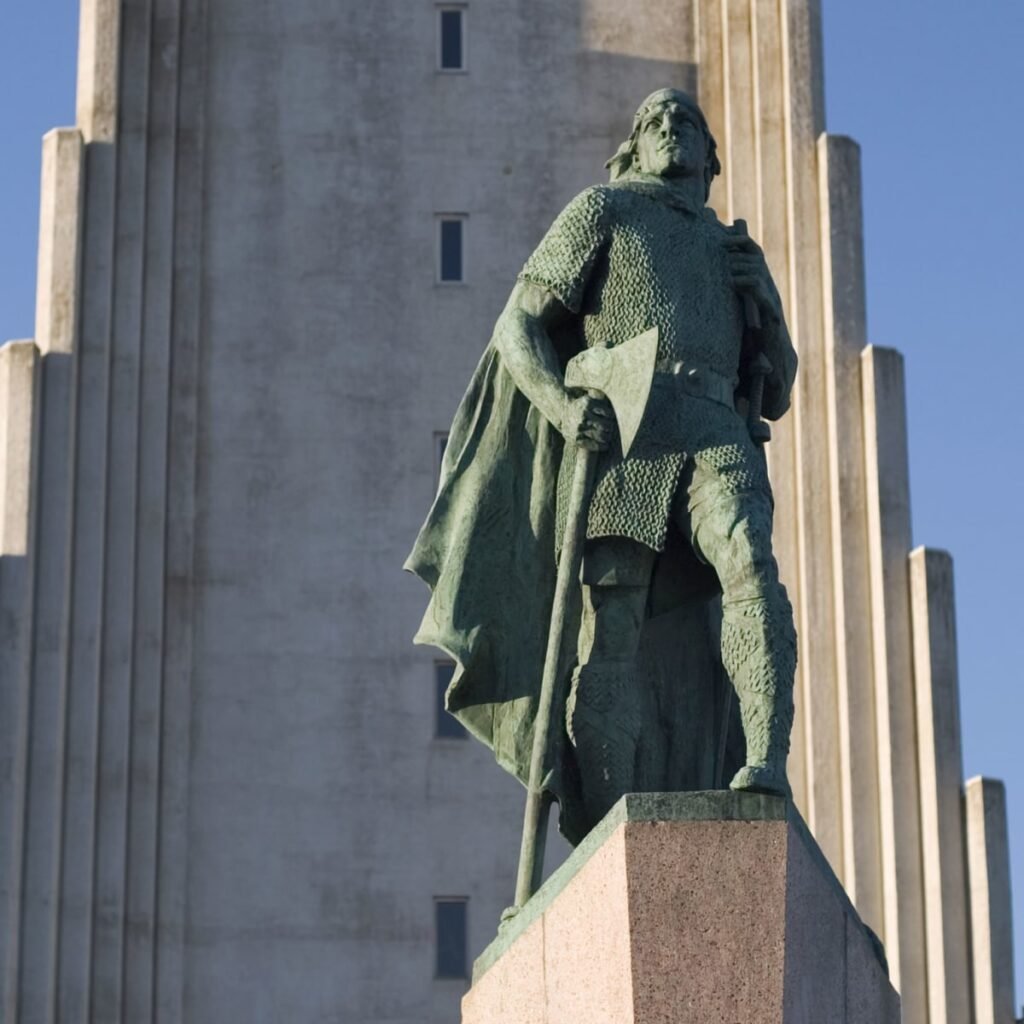
It definitely wasn’t Columbus who got to America initially anymore considering that we now have evidence of settlements in Canada. Although not considered part of America there tend to have been rather of few people who have actually”Found”the U.S.A. initially and if not settling here certainly the Viking have at least spent time.
Eric Weiner supposed that, “The Vikings’ early expeditions to North America are well recorded and accepted as historic reality by most scholars. Around the year 1000 A.D., the Viking explorer Leif Erikson, kid of Erik the Red, sailed to a location he called “Vinland,” in what is now the Canadian province of Newfoundland. Erikson and his team didn’t remain long– just a couple of years– prior to going back to Greenland. Relations with native North Americans were described as hostile.“
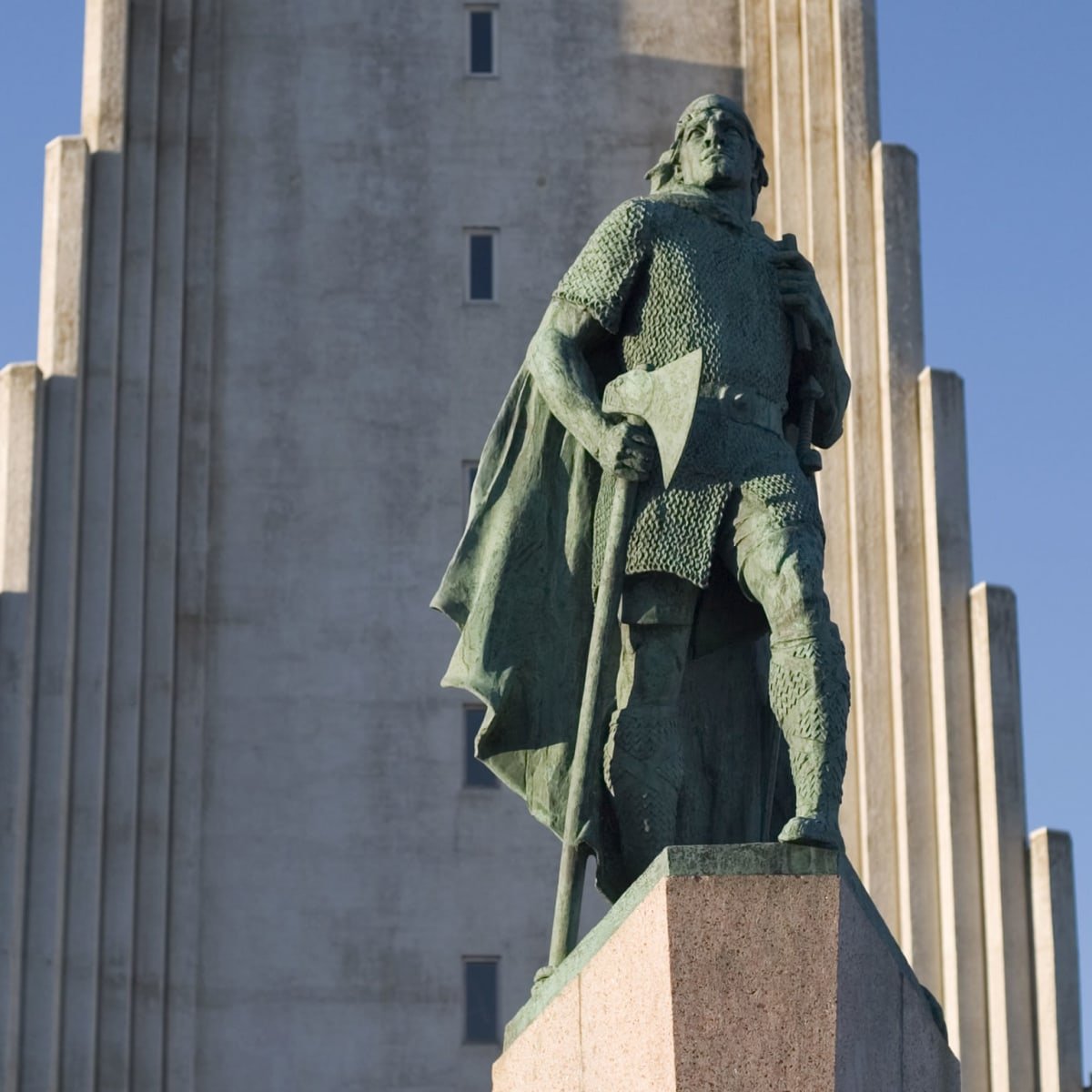
Does Christopher Columbus be worthy of the accomplish if the Vikings were this close and even talked to the then know north Americans? Eugene Linden had a more detailed stament as tro how the journey became and what happened.
“Thorfinn and his band discovered their guaranteed riches– video game, lumber, fish and pasture– and also experienced Native Americans, whom they denigrated as skraelings, or “sorrowful people.” Little marvel, then, that relations with the Locals gradually weakened. About 3 years after starting, Thorfinn– together with his household and surviving team– deserted the North American settlement, possibly in a hail of arrows. (Archaeologists have found arrowheads with the remains of buried Norse explorers.) After sailing to Greenland and then Norway, Thorfinn and his household settled in Iceland, Thorfinn’s youth home.
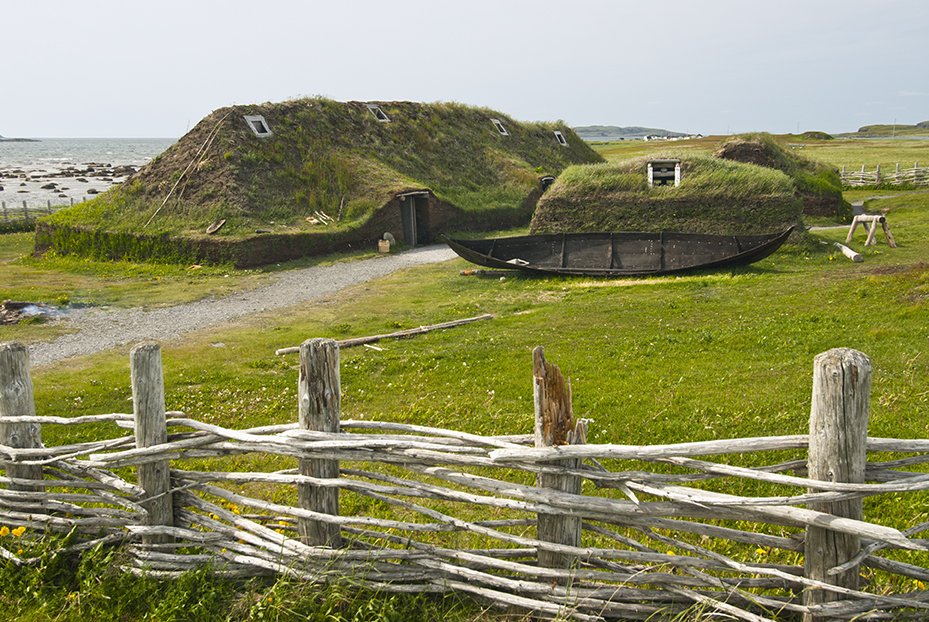
Whoever their author was, the stories have actually challenged scholars to match the name pointed out in them to genuine topography. For example, Thorfinn called two important places where he and his group camped in the New World Straumfjord (stream fiord) and Hop (lagoon) and explained the first as having strong currents. Scholars have variously situated Straumfjord, where Snorri was born, in Buzzards Bay, Massachusetts; Long Island Noise; the Bay of Fundy; and L’Anse auxMeadows (the Norse site found by Helge and Anne Ingstad on the northern pointer of Newfoundland). Various supporters have actually positioned Hop near New York City, Boston and points north.
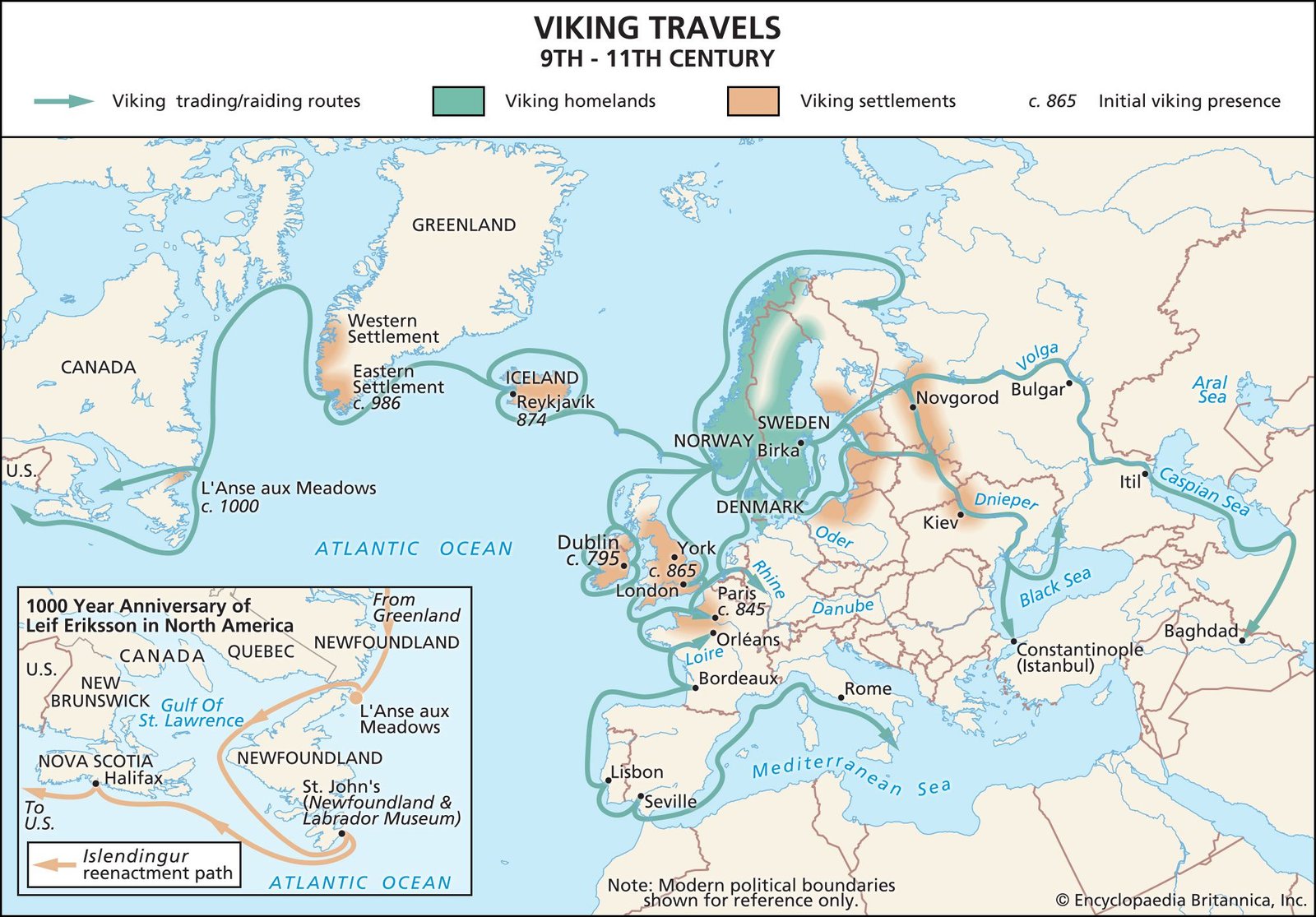
If in fact Thorfinn and business traveled as far south as Gowanus Bay in New York City Harbor, as asserted by the British scholar Geoffrey Gathorne-Hardy in 1921, they would have cruised past a few of the greatest stands of primeval woods on the planet, not to point out grapes– treasured by Norse chiefs who cemented their status with feasts accompanied by massive amounts of red wine– and unlimited fish and game.“
It
seems a staggering amount of evidence of this journey and many supplementing it has actually made it not only plausible however a lot more likely that this trip was completed with sensible journal entries chronicling the how and why they would it even more than Canada and the legacy of peop0le involved in making those decisions during a rough time for Vikings that waged war not only on their opponents however even by themselves individuals if they had been slighted.
WORKS MENTIONED 1.”Weiner, Eric, and Russell Freedman
. “Concerning America: Who Was First? “NPR, NPR, 8 Oct. 2007, https://www.npr.org/2007/10/08/15040888/coming-to-america-who-was-first.”2.””Publication, Smithsonian.”The Vikings: A Remarkable See to America
.”Smithsonian.com, Smithsonian Institution, 1 Dec. 2004, https://www.smithsonianmag.com/history/the-vikings-a-memorable-visit-to-america-98090935/.”—Associated Links-VIKING MUGS VIKING
Viking History: VIKINGS FOUND AMERICA? Around the year 1000 A.D., the Viking explorer Leif Erikson, son of Erik the Red, cruised to a place he called “Vinland,” in what is now the Canadian province of Newfoundland.
Viking History: VIKINGS TRUE EXPLOERERS ?!?!
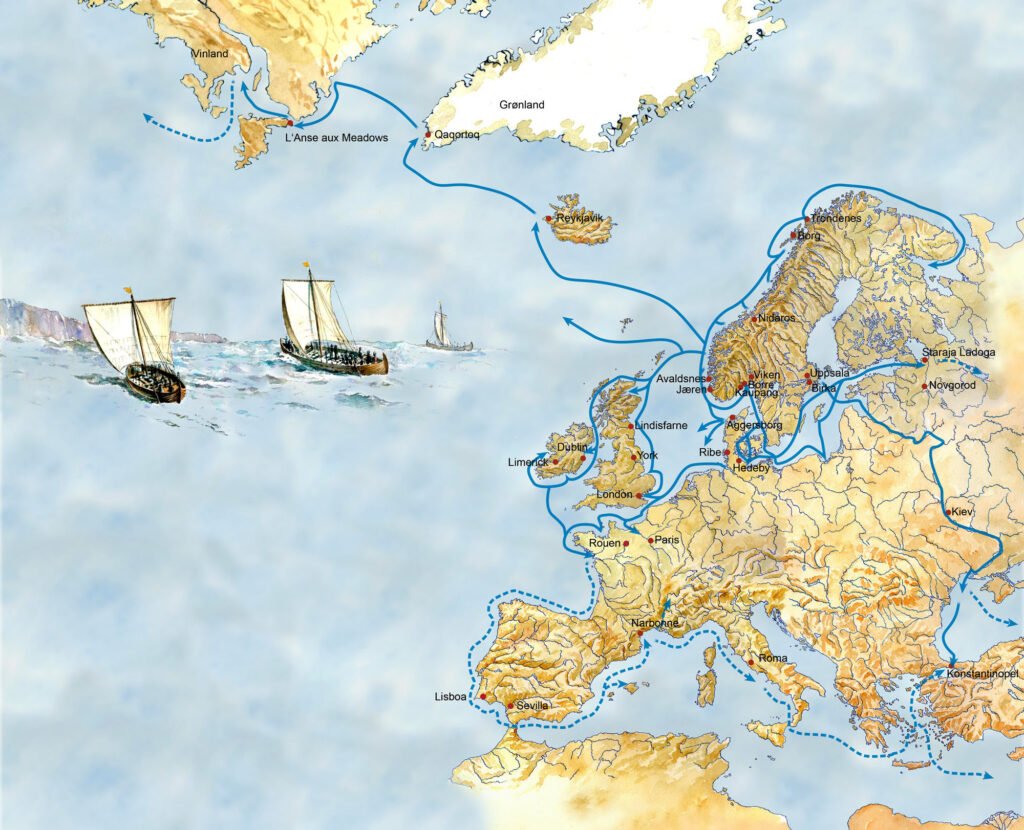
Vikings are considered by numerous to be the real explores of their time. they lived such spontaneous lives. They aimed to meet brand-new peoples in new
lands and make
their own maps and markers causing these locations along with the resources and mark significant hostility and friendliness. Some of these Vikings have thoughts a concepts beyond war such as what Check out Sweden makes note of. They write that,”According to Norse mythology, heroes slain in fight wound up in Valhalla– an afterlife destination in the shape of a lofty hall in Asgard, the realm of the gods. So, whoare the Viking gods? Like the Vikings themselves, these are rather intricate characters. Take Odin, the king of the Æsir clan, and the god of war, wisdom, poetry and death, riding his eight-footed horse’ Sleipner ‘. Odin’s spouse Frigg is the goddess of relationships, safeguarding all mothers, regardless of frequent adulteries. Baldr– goodness personified– is the boy of Odin and Frigg. Representing courage, he’s eliminated by fellow god Loke, and permanently grieved. To continue the count, Freyr and his sibling Freyja personify fertility and promote a worthwhile harvest, healthy cattle and peace. Striding forth in thunder and lightning, Thor is likewise associated with fertility but more than anything, he has a skill for managing chaos and keeping giants at bay
— a task made easier with his precious ‘Mjölnir’hammer. The Vikings’impact can be felt everywhere to this day. Their resourceful, nature-centric lifestyle continues to provide motivation to numerous and their innovative methods as shipbuilders are still in usage today. The Viking legacy is particularly evident in modern language and names. The’ thing’or’ting’ assembly was an early variation these days’s parliaments and courts–‘ting’or’landsting’in modern Swedish– established by the Norse people to solve arguments and develop brand-new laws. Any surname ending with’child’ can be traced back to the Vikings as they generated the’ kid of’name structure. In Ireland and Scotland, the’ Mc ‘is the equivalent. Much of Britain’s towns and place names are derived from the Old Norse language, due to the fact that the Vikings settled there– particularly in northern and eastern England.
Towns and locations ending in ‘thorpe'( an ‘distant farm’ or’ torp’in Swedish today), ‘by’ (‘farm’in Old English and ‘village ‘in modern Swedish)and’kirk'( implying’church’ or’assembly’)are common. From Dunthorpe in Oxfordshire to Kirkby in Liverpool, the Viking presence is everywhere in England. “Lots of Vikings in fact had a lot to do with cruising in far off lands but a few of them have actually made their marks in history as highly significant and typically topic of conversation. Some, Like Leif Erickson have actually even had locations named after them and still going today. The dockyards website explains that these Norsemen have actually had the biggest effect on the Viking tradition,”Naddodd was a Faroese Viking who found Iceland unintentionally, after his ship was blown off of its preliminary course in the North Atlantic Ocean. He in fact meant to set sail to the Faroe Islands, however after a journey
on a rainy sea, his ship and team were unexpectedly forced to set ashore on an uncharted brand-new land.Gunnbjörn Ulfsson was a Norwegian Viking who to start with discovered Greenland after getting lost from his path from Norway to Iceland. When he returned to Norway, Gunnbjörn informed others how he spent a winter in the rocky and frozen Greenland.Erik Thorvaldsson(frequently referred to as ‘Erik the Red ‘)was a Norwegian Viking who is in fact credited for finding Greenland.
He reached the south-eastern shorelines of Greenland after he was banished from Iceland. However, soon after he had actually set foot on Greenlandic soil, Erik sailed back to Iceland in order to encourage other Norsemen to set sail with him and settle there.
The name Greenland stems from Erik the Red’s accounts about a fertile land located in the west, referred by him to as’ Groenland ‘. Doubtlessly, the story of Erik the Red involving the name of Greenland was absolutely nothing more but a mere euphemism, offered the fact that
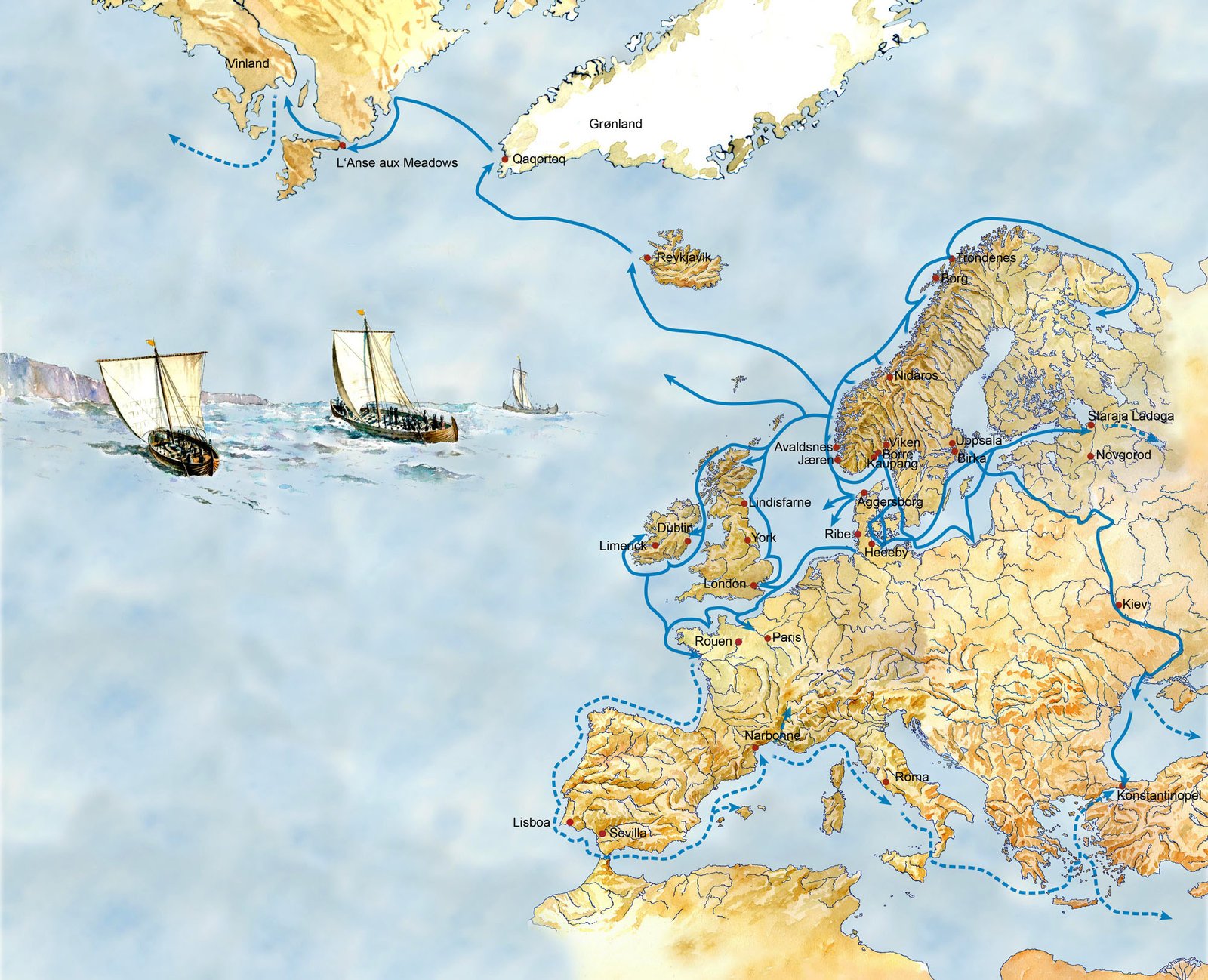
much of the Arctic island’s territory wasn’t fertile at all, being either frozen or rocky, and therefore uninhabitable.Leif Eriksson( likewise recalled by his label’Leif the Lucky ‘) was the son of Erik the Red. A skillful explorer much like his daddy, he took a trip to North America upon hearing the news about a land filled with forests and rich meadows from an Icelandic merchant who identified several eastern seaside parts of modern Canada on through one of his voyages.So it is that Leif Eriksson overtook Christopher Columbus in discovering the American continent by a margin of roughly 500 years. He offered the name Vinland to the recently found area. The Norsemen confronted themselves with harsh opposition on behalf of the Native Americans who were already living there, and as such they weren’t able of completely settling the area where they landed.” Without the smaller sized contributions of the Vikings who explained the directions and made those markers along the method none of the larger named ones would have made it up until now by themselves. It takes the footwork of a few to make a legacy so extensive as the Vikings and make it part of the numerous. WORKS POINTED OUT 1.”” Sweden’s Legendary Vikings– beyond the Callous Stereotype.
“
The History and Culture of the Scandinavian Vikings|See Sweden, https://visitsweden.com/what-to-do/culture-history-and-art/history/vikings-beyond-the-stereotype/. “2.””Rouă, Victor.” Leading Five Viking Age Explorers You Ought To Definitely Know.”The Dockyards, 3 June 2021, https://www.thedockyards.com/top-5-viking-explorers/
.”— Related Hyperlinks-VIKING MUGS VIKING CLOTHES
Numerous Vikings actually had a lot to do with sailing in far off lands but a few of them have actually made their marks in history as extremely notable and often topic of discussion. Without the smaller contributions of the Vikings who pointed out the instructions and made those markers along the method none of the bigger called ones would have made it so far on their own. It takes the footwork of a couple of to make a legacy so profound as the Vikings and make it part of the many. Without the smaller contributions of the Vikings who pointed out the instructions and made those markers along the method none of the larger named ones would have made it so far on their own. It takes the footwork of a few to make a legacy so profound as the Vikings and make it part of the numerous.
Viking History: Leif Eriksson Arrived at The United States And Canada Prior To Christopher Columbus …
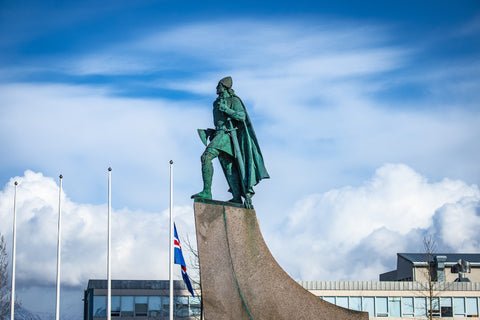
The Vikings was among a kind when it concerned navigating the seas and tactical fight techniques for their time. Along with unique skills and supreme strength they also brought Leif Eriksson into the world “Boy of Erik the Red”. Leif Eriksson really found North America before Christopher Columbus on among his quests from Greenland which had been found by his daddy. This Viking achievement was marked in time through legends. In the contemporary America we are residing in today, everybody appears to think about Christopher Columbus when it concerns discovering America. As a happy Norwegian, my dad in Florida in fact made a main day on the calendar in Tampa for Leif Eriksson day; although this is a holiday celebrated in a lot of places, it was a great achievement to make it official in Tampa. Everyday we continue to keep alive the viking method while revealing aspects to our forefathers before us. Next time somone beside you states “Delighted Columbus Day”… Make certain to tell them all about the Vikings!
In the modern-day day America we are living in today, everyone seems to think of Christopher Columbus when it comes to finding America. As a proud Norwegian, my daddy in Florida really made an official day on the calendar in Tampa for Leif Eriksson day; although this is a vacation commemorated in most places, it was a terrific achievement to make it main in Tampa. As a happy Norwegian, my father in Florida really made a main day on the calendar in Tampa for Leif Eriksson day; although this is a holiday commemorated in many places, it was a great achievement to make it main in Tampa.
Viking History: What was so special about the Viking longship?


The Viking long ship is something not as spoken about as you envision it ought to be. This powerful ship was a lethal weapon for the Vikings enabling them to browse in both shallow & & deep waters unlike their local opponents at the time. Not only where the ships able to browse in several depths but it was also extremely lightweight which was perfect for beach landings and dragging it up and down from coast. Scandinavia is filled with rocky oceans and narrow death’s which made it a place really hard to navigate; This also provided the Scandinavians a leg up when it came to trading goods because they had the ability to deliver products much faster. The Vikings genuinely surprised the remainder of the world as they were able to go narrower and further than those around them at the time. These ships were the ultimate tactical pieces in any kind of battle as they might be utilized to transfer high numbers of Vikings at the same time or perhaps to be tied together for producing a consistent platform permitting infantry warfare.
In today’s world we take a look at various types of ships from canoes to yachts & & cruise ships; it is necessary to keep in mind who was accountable for the architecture and discovery of the Viking longship. The Vikings of Scandinavia where truly thinking ahead of their time! We will always remember as we see comparable designs today!
Scandinavia is filled with rocky oceans and narrow passing’s which made it a location extremely tough to browse; This also offered the Scandinavians a leg up when it came to trading items due to the fact that they were able to deliver materials much quicker. Not just where the ships able to navigate in several depths but it was also really light weight which was best for beach landings and dragging it up and down from shore. Scandinavia is filled with rocky oceans and narrow passing’s which made it a place extremely hard to browse; This likewise provided the Scandinavians a leg up when it came to trading items due to the fact that they were able to ship products much quicker.
Viking History: Why were the Berserkers so feared in fight?
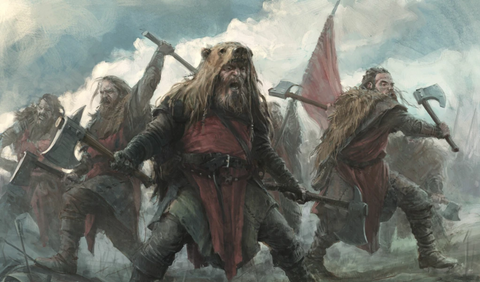
The Berserkers were a very unique group of elite Viking warriors who went to fight without your standard armor. Instead they would use animal pelts, typically from wolves or bears. The word “berserker “is from the Old Norse” serkr “meaning”coat”or” t-shirt “and”ber “the Norse word for” bear “. They fought in such ferocity with such a trance-like fury sometimes they could forget who their buddy or opponent was

There was a theory that Berserkers would take mushrooms or hallucinogens prior to battle. The hallucinogens in mix with a full adrenaline rush is a best recipe for the aggressive hypnotic trance like fury they could take advantage of.
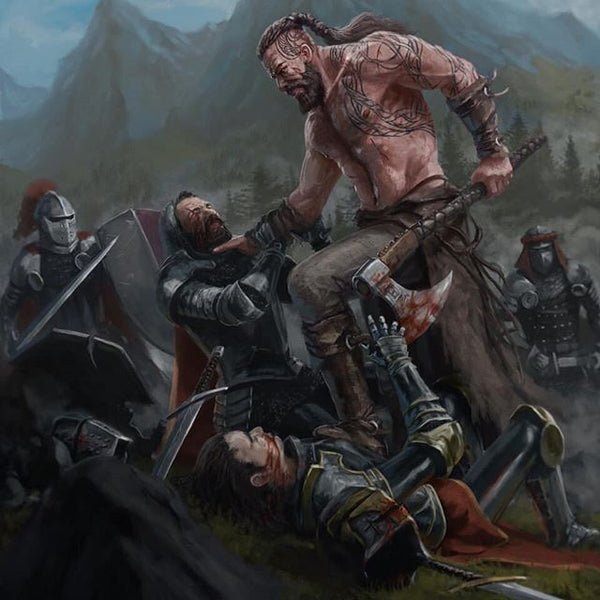
Enemies would react like a deer in headlights as Berserkers were incredibly hard to forecast let alone understand what to prepare for. It was extremely common for the Berserkers to wield an axe in each hand which enabled them to do a lot of damage from close quarters mid and striking variety throwing. They might not have had the best defensive abilities based on their clothes and weapon selection, but you did not want to be across from them in battle since the damage and raw fury is something that is almost impossible to match. The Berserker is a warrior type that will constantly hold a high and special place in history since it is hard to discover a direct comparison.
To view our everyday Viking material follow us on our platforms listed below,
Instagram @ Viking Lifestyles
Facebook @ Viking Lifestyles
TikTok @ Viking Lifestyles

< img src ="// cdn.shopify.com/s/files/1/0108/0036/5625/files/Official_Logo_large.png?v=1561848178" alt ="" style="margin-left: automobile; margin-right: auto;" >
There was a theory that Berserkers would take mushrooms or hallucinogens prior to battle.< img src="https://everythingviking.com/wp-content/uploads/2022/12/viking-history-why-were-the-berserkers-so-feared-in-battle-1.jpg "alt > Enemies would react like a deer in headlights as Berserkers were extremely difficult to anticipate let alone understand what to prepare for.
Viking History: Leif Eriksson Arrived at The United States And Canada Prior To Christopher Columbus …

The Vikings was among a kind when it concerned navigating the seas and tactical fight techniques for their time. Along with unique skills and supreme strength they also brought Leif Eriksson into the world “Boy of Erik the Red”. Leif Eriksson really found North America before Christopher Columbus on among his quests from Greenland which had been found by his daddy. This Viking achievement was marked in time through legends. In the contemporary America we are residing in today, everybody appears to think about Christopher Columbus when it concerns discovering America. As a happy Norwegian, my dad in Florida in fact made a main day on the calendar in Tampa for Leif Eriksson day; although this is a holiday celebrated in a lot of places, it was a great achievement to make it official in Tampa. Everyday we continue to keep alive the viking method while revealing aspects to our forefathers before us. Next time somone beside you states “Delighted Columbus Day”… Make certain to tell them all about the Vikings!
In the modern-day day America we are living in today, everyone seems to think of Christopher Columbus when it comes to finding America. As a proud Norwegian, my daddy in Florida really made an official day on the calendar in Tampa for Leif Eriksson day; although this is a vacation commemorated in most places, it was a terrific achievement to make it main in Tampa. As a happy Norwegian, my father in Florida really made a main day on the calendar in Tampa for Leif Eriksson day; although this is a holiday commemorated in many places, it was a great achievement to make it main in Tampa.
Viking History: What was so special about the Viking longship?


The Viking long ship is something not as spoken about as you envision it ought to be. This powerful ship was a lethal weapon for the Vikings enabling them to browse in both shallow & & deep waters unlike their local opponents at the time. Not only where the ships able to browse in several depths but it was also extremely lightweight which was perfect for beach landings and dragging it up and down from coast. Scandinavia is filled with rocky oceans and narrow death’s which made it a place really hard to navigate; This also provided the Scandinavians a leg up when it came to trading goods because they had the ability to deliver products much faster. The Vikings genuinely surprised the remainder of the world as they were able to go narrower and further than those around them at the time. These ships were the ultimate tactical pieces in any kind of battle as they might be utilized to transfer high numbers of Vikings at the same time or perhaps to be tied together for producing a consistent platform permitting infantry warfare.
In today’s world we take a look at various types of ships from canoes to yachts & & cruise ships; it is necessary to keep in mind who was accountable for the architecture and discovery of the Viking longship. The Vikings of Scandinavia where truly thinking ahead of their time! We will always remember as we see comparable designs today!
Scandinavia is filled with rocky oceans and narrow passing’s which made it a location extremely tough to browse; This also offered the Scandinavians a leg up when it came to trading items due to the fact that they were able to deliver materials much quicker. Not just where the ships able to navigate in several depths but it was also really light weight which was best for beach landings and dragging it up and down from shore. Scandinavia is filled with rocky oceans and narrow passing’s which made it a place extremely hard to browse; This likewise provided the Scandinavians a leg up when it came to trading items due to the fact that they were able to ship products much quicker.
Viking History: Why were the Berserkers so feared in fight?

The Berserkers were a very unique group of elite Viking warriors who went to fight without your standard armor. Instead they would use animal pelts, typically from wolves or bears. The word “berserker “is from the Old Norse” serkr “meaning”coat”or” t-shirt “and”ber “the Norse word for” bear “. They fought in such ferocity with such a trance-like fury sometimes they could forget who their buddy or opponent was

There was a theory that Berserkers would take mushrooms or hallucinogens prior to battle. The hallucinogens in mix with a full adrenaline rush is a best recipe for the aggressive hypnotic trance like fury they could take advantage of.

Enemies would react like a deer in headlights as Berserkers were incredibly hard to forecast let alone understand what to prepare for. It was extremely common for the Berserkers to wield an axe in each hand which enabled them to do a lot of damage from close quarters mid and striking variety throwing. They might not have had the best defensive abilities based on their clothes and weapon selection, but you did not want to be across from them in battle since the damage and raw fury is something that is almost impossible to match. The Berserker is a warrior type that will constantly hold a high and special place in history since it is hard to discover a direct comparison.
To view our everyday Viking material follow us on our platforms listed below,
Instagram @ Viking Lifestyles
Facebook @ Viking Lifestyles
TikTok @ Viking Lifestyles

< img src ="// cdn.shopify.com/s/files/1/0108/0036/5625/files/Official_Logo_large.png?v=1561848178" alt ="" style="margin-left: automobile; margin-right: auto;" >
There was a theory that Berserkers would take mushrooms or hallucinogens prior to battle.< img src="https://everythingviking.com/wp-content/uploads/2022/12/viking-history-why-were-the-berserkers-so-feared-in-battle-1.jpg "alt > Enemies would react like a deer in headlights as Berserkers were extremely difficult to anticipate let alone understand what to prepare for.


